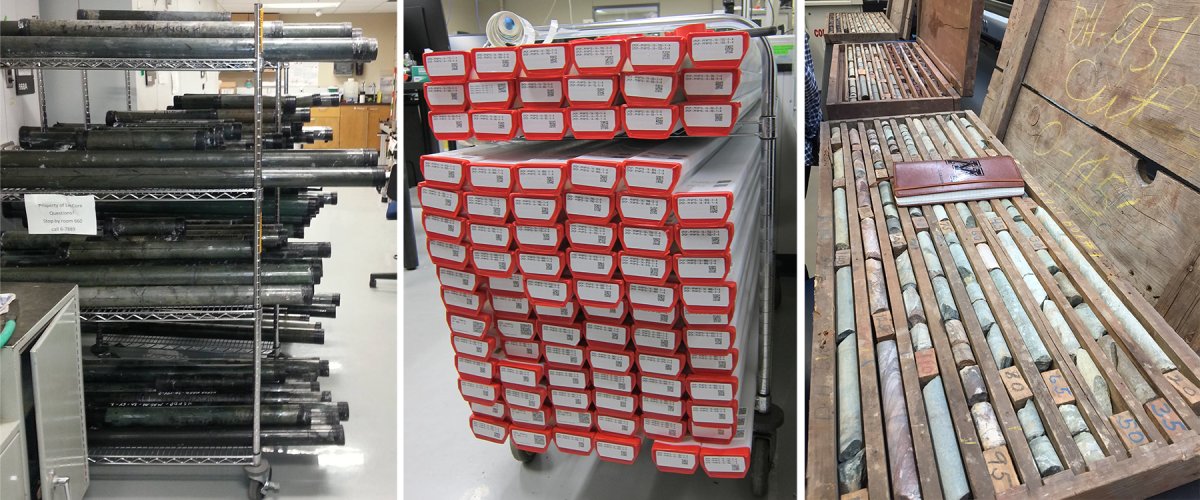Archive
The CSD Facility curates cores and other samples from any continental location, reference collections, and an extensive data and publication archive.

The CSD Facility has operated the National Lacustrine Core Repository since 2000, and now curates the world's largest and most diverse collection of lacustrine sediment cores. The biggest contributors (by core volume) are drilling projects, but small-volume projects outnumber the drilling campaigns by a factor of nearly 50. The vast majority of the curated materials are moist, cylindrical cores split in half, but unsplit cores, grab samples, dry cores, and a rapidly-growing number of rock cores, peat cores, freeze cores and permafrost cores round out the collection. The Repository also curates unused subsamples and sample residues for re-distribution and analysis. In addition to these physical holdings, the CSD Facility captures metadata for all materials moving through the Facility; thus cores processed at the Facility but stored at other institutions are integrated among the physical holdings for the purpose of data discovery.
Metadata for the entire (physical and virtual) collection are made available for discovery through multiple means. Online tables with a selection of metadata and equivalent spreadsheet files for download are regularly updated on the CSD Facility website, and from these a .kml file is generated that allows geographical views and searches through the holdings with Google Earth software.
Data Distribution
Data generated at the CSD Facility and sample metadata are permanently archived and available for distribution following NSF data access policies. The data are available in numerous different formats: CSV, KML and plain old text searchable in any browser.
Sample Distribution
Core material is a finite resource that must be carefully apportioned for use in scientifically sound studies. Sample requests may originate from any scientist, curator, or educator with adequate resources to complete a scientific investigation, or who can prepare materials for curatorial or educational purposes.
Publication and Citation
Hundreds of peer-reviewed journal articles have been published from projects receiving CSD Facility support, plus many more abstracts, theses, and dissertations.
Accessioning Cores/Samples
The repository accepts both new and old cores, and the standards for accessioning these cores are uniform. Learn more about the types of materials and metadata required for materials to be accepted.
